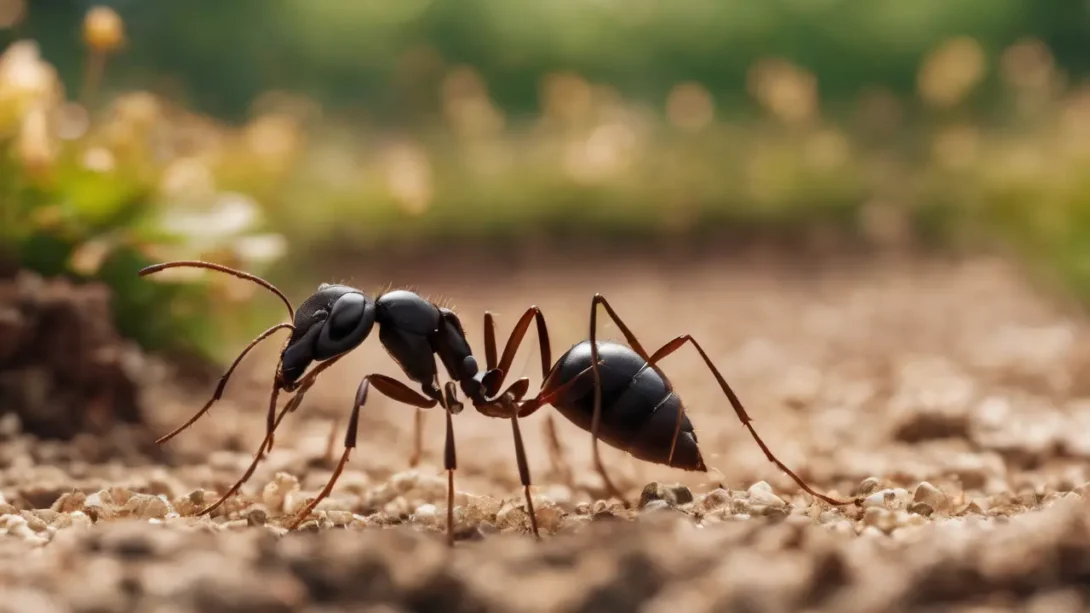Diatomaceous earth (DE) is a powdery substance widely recognized for its versatility in gardening and pest control. Derived from the fossilized remains of diatoms, a type of algae, DE has garnered attention for its ability to tackle various pests, including ants. This article delves into the specifics of how DE functions as an ant deterrent and killer, highlighting its benefits for gardeners seeking safe and natural pest management solutions.
What is Diatomaceous Earth?
Diatomaceous earth is made from the fossilized remains of diatoms, microscopic aquatic organisms. The skeletons of these diatoms are composed of silica, which, over millennia, have accumulated in sedimentary deposits. These deposits are mined and ground into a fine, powdery substance that is then packaged for various uses, including pest control.
There are primarily two types of DE: food grade and pest control grade. Food grade DE is safe for consumption by humans and animals and is often used as a dietary supplement or to control internal parasites. Pest control grade DE, while still non-toxic, is specifically processed for pest management. Its effectiveness against ants and other pests makes it a preferred choice for gardeners and homeowners alike.
The benefits of using DE extend beyond its efficacy. It is non-toxic, making it safe for use around children and pets, and it poses no harm to the environment. This eco-friendly aspect is particularly appealing to those seeking sustainable gardening and pest control methods.
How DE Works Against Ants
The effectiveness of diatomaceous earth against ants lies in its physical properties. DE particles are extremely sharp at the microscopic level, though they feel like powder to the human touch. When ants come into contact with DE, the sharp edges of the diatom particles cut through their exoskeletons, causing tiny abrasions. This leads to the loss of bodily fluids and ultimately dehydration and death.
For DE to be effective, the area where it is applied must be dry. Moisture can clump the particles together, reducing their ability to cause abrasions. It’s also worth noting that the action of DE is not immediate. Depending on the size of the ant population and the level of infestation, it may take a few days to see a significant reduction in ant activity.
Application of Diatomaceous Earth for Ant Control
When it comes to applying diatomaceous earth for ant control, precision and preparation are key. The first step is to ensure that the area where DE is to be applied is clean and, most importantly, dry. Since DE loses its effectiveness when wet, removing any moisture from the application area enhances its pest control capabilities.
How to Apply DE
For effective application, DE should be spread thinly over areas where ants are known to travel or congregate. This includes along ant trails, around the entrances to their nests, and near plants and other garden features they may be infesting. A dust applicator or even a simple homemade shaker (such as a jar with holes punched in the lid) can be used to achieve a light, even coverage. It’s important to target the perimeter of your home as well, especially if ants are entering from outside.
Safety should not be overlooked during application. Although DE is non-toxic, it can irritate the lungs if inhaled in large quantities. Wearing a mask and goggles during application can prevent irritation to the respiratory system and eyes.
Safety Measures
While DE is considered safe for humans and pets, it’s still important to apply it with care. Avoid application areas where pets and children are likely to inhale or come into direct contact with the powder. Although food-grade DE poses no toxicity, inhalation should still be avoided as a precautionary measure.
Limitations and Considerations
Diatomaceous earth is a powerful tool in the battle against ants, but it has its limitations. One of the main considerations is the need for reapplication after rain or watering. Since DE only works when dry, any moisture will necessitate a fresh application to maintain its effectiveness.
Additionally, DE does not discriminate between pests. This means that beneficial insects, such as pollinators, can also be affected if they come into contact with the powder. To minimize harm to these beneficial species, apply DE directly to ant trails and avoid spreading it over flowers or plants where these insects are likely to visit.
The effectiveness of DE can also vary depending on the ant species and the location of their nests. While it can significantly reduce the number of foraging ants, it may not reach the queen or the nest itself, which is crucial for long-term control. Therefore, DE should be considered a part of a broader ant management strategy rather than a standalone solution.
Integrating DE into a Comprehensive Ant Control Plan
While diatomaceous earth is effective in controlling ant populations, it works best when integrated into a broader pest management strategy. This multifaceted approach not only targets the current infestation but also helps prevent future outbreaks.
Combining DE with Other Natural Ant Control Methods
For enhanced effectiveness, consider combining DE with other natural ant control measures. For instance, borax bait stations can attract and poison ants, reducing the population, while DE physically prevents new ants from entering the area. Natural repellents like cinnamon, peppermint oil, or lemon juice can also deter ants when used in conjunction with DE, creating a more hostile environment for these pests.
Preventative Measures
Prevention is key to long-term control. Regularly inspect your home and garden for potential ant entry points, sealing cracks and crevices with caulk or another suitable material. Remove attractants by keeping your kitchen and dining areas clean, storing food in airtight containers, and managing waste effectively. In the garden, ensure that plants are healthy and stress-free, as weakened plants are more susceptible to pest infestations.
Monitoring and Maintenance
After applying DE and additional ant control measures, regular monitoring is essential to assess their effectiveness. Keep an eye on ant activity, noting any changes in their behavior or numbers. Reapply DE as necessary, especially after rain or in areas of heavy ant traffic. Remember, pest control is an ongoing process that requires vigilance and adaptation to changing conditions.
Conclusion
Diatomaceous earth offers a safe, natural, and effective method for controlling ants in the garden and home. By understanding how DE works and applying it correctly, you can significantly reduce ant populations without resorting to harsh chemicals. However, DE is most effective when used as part of a comprehensive ant management plan that includes other natural remedies, preventative measures, and regular monitoring. With patience and persistence, you can maintain a healthy, ant-free environment that is safe for both your family and the ecosystem.



